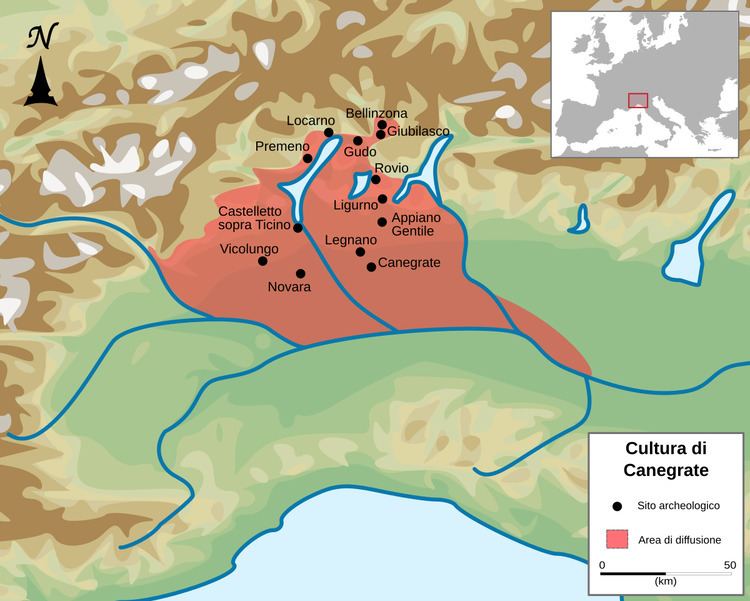 | ||
The Canegrate culture was a civilization of Prehistoric Italy who developed from the recent Bronze Age (13th century BC) until the Iron Age, in the areas of what are now western Lombardy, eastern Piedmont, and Ticino. Canegrate represented a completely new cultural dynamic to the area expressed in pottery and bronzework making it a typical example of the western Hallstatt culture.
Contents
The name comes from the locality of Canegrate in Lombardy, south of Legnano and 25 km north of Milan, where Guido Sutermeister discovered important archaeological finds (approximately 50 tombs with ceramics and metallic objects). The site was first excavated in 1926 in the area of Rione Santa Colomba, and systematic excavation occurred between March 1953 and autumn 1956, which led to the discovery of a necropolis of 165 tomb. It is one of the richer archeological sites of Northern Italy.
History
The necropolis found in Canegrate is very similar to those realized in the same period in the north of Alps. It represents the first migratory wave of the proto-Celtic population from the northwest part of the Alps that, through the Alpine passes, had already penetrated and settled in the western Po valley between Lake Maggiore and Lake Como (Scamozzina culture). They brought a new funerary practice—cremation—which supplanted inhumation.
From the archaeological evidence it can be deduced that their interactions with the native populations had not been completely peaceful. The uniform and isolated Canegrate finds do not show any trace of the preceding Polada culture, nor do they provide evidence for a gradual Canegrate insertion into the area.
The bearers of the Canegrate culture maintained its homogeneity for only a century, after which it melded with the Ligurian aboriginal populations and with this union gave rise to a new phase called the Golasecca culture.
The origins of the Orobii, a population localized by classical writers in these areas and which founded the town of Como, have been linked to the Canegrate culture.
The necropolis
Since ancient times, the inhabitants of Olona Valley lived mainly away from the river, on higher ground that certainly would not have been affected by seasonal floods. The most significant archaeological finds, from prehistory until Roman rule, have been discovered along the edges of the Olona Valley, and the necropolis connected to the culture of Canegrate was not an exception.
